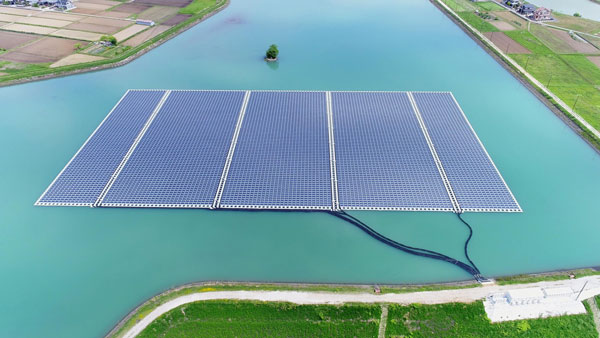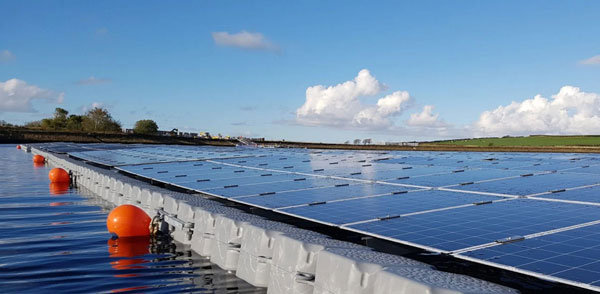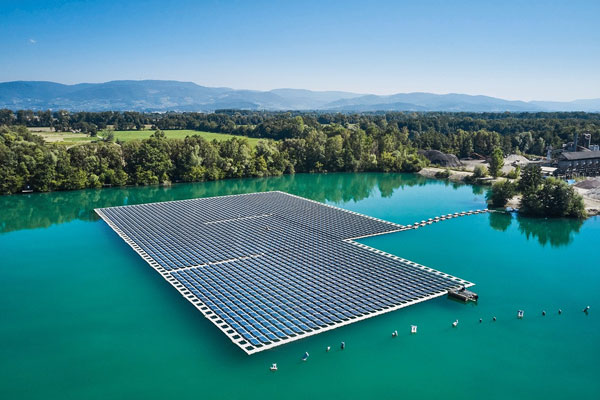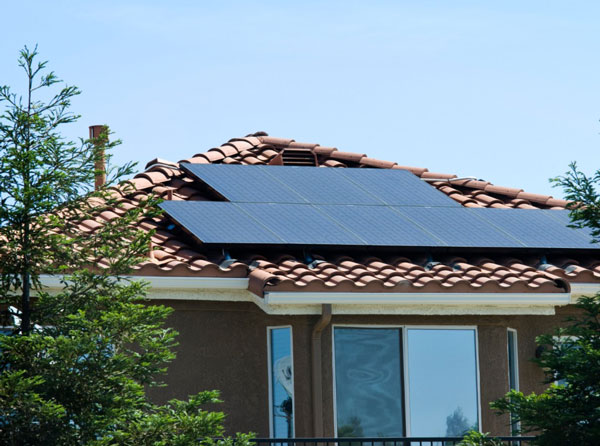Advanced Photovoltaic Materials
The accelerated development of advanced photovoltaic materials becomes crucial for the improvement of the efficiency and cost-effectiveness of solar energy systems. Particularly, recent innovation efforts become centered around perovskite solar cells, which offer efficiencies that are comparable to the traditional silicon cells with a lower-levelized cost of energy. For instance, in 2023, a study by Park and Zhang reported that the implementation of the novel organic-inorganic hybrid perovskite allowed enhancing the solar conversion efficiency up to approximately 25.5%, which was higher than that of most commercial products that existed at the time. Overall, recent advancements in photovoltaic materials tend to assume improved durability and sustainability, increased integration within building materials, better scalability, or economic viability and offer new solutions for energy storage integration.

Improved Durability and Sustainability
Developments in advanced photovoltaic materials lead to increasingly sustainable solutions for their implementation. As an example, the use of quantum dots and a polymer matrix for the production of composite material dedicated to solar panels enhanced the durability of the latter and decreased the degradation caused by UV irradiation and other environmental factors. As a consequence, it also became easier to recycle the panels without causing environmental damage. Tests conducted in desert and coastal environments demonstrated that the use of solar panels that included the composite material ensured that the panels would retain over 90% efficiency within 30 years of their operation.
Integration within Building Materials
In many respects, the implementation of photovoltaic technology within building materials represents a revolutionary approach to urban design. In particular, at one time, it has become possible to create a skyscraper in New York City that had the complete façade made of solar glass. That construction amounted to a 35% reduction in the building’s carbon footprint as the solar glass multiple times exceeded the total energy consumed by the building every year. Thus, the solar glass structure not only supported the building itself but also served as a model for sustainable urban development.
Scalability and Economic Viability
One other crucial aspect of photovoltaic materials’ accelerated development is the implementation of decreasing prices and scaling production that would define the economic viability of solar panels’ large-scale implementation. In that respect, one of the recent developments is represented by HelioVolt that employed roll-to-roll manufacturing of thin-film solar cells, which reduced the production processes’ costs by up to 40%. The improvement of scalability of solar panels’ production and the reduction of the expenses related to it make the broad variety of applications more economically viable.
Innovations in Energy Storage Integration
Given the variability of solar power at different times of periods of the year, the integration of advanced energy storage solutions that would support the function of photovoltaic systems becomes a critical area of research. For instance, in 2021, PK Pujari, H Kareem, and T Srinivas released their report on the development of lithium-sulfur batteries that were superior in the energy density to the traditional lithium-ion ones and possessed longer life spans. In off-grid and isolated solar power installations, they would ensure the ability to generate and store electricity even during darker weeks.
Enhanced Energy Storage Solutions
Energy storage-related innovations are a prerequisite for the adequate effective operation of renewable energy sources due to the specifics of their generation. In the situation of water-based renewable systems like hydrokinetic and tidal energy solutions, energy storage is strongly needed for addressing water flow variability and the intermittent character of the resource.
Advanced battery technologies
Flow batteries are recognized as a revolutionary advanced battery technology with the possibility of implementing improvements in energy storage from water-based sources. Such technologies are noted for their scalability and longevity for the needs of energy applications with serious fluctuations. An example of a successful implementation refers to a tidal energy installation situated near San Francisco where the use of vanadium redox flow batteries has helped to triple the facility’s energy delivery during peak demand hours without extra negative environmental impacts.
Hybrid storage systems
Another innovative battery storage technology refers to hybrid solutions with two or more energy storage types applied in various combinations. An example includes a hydrokinetic system realized in the Amazon River basin where lithium-ion batteries were combined with supercapacitors for usual operation and addressing short-term enormous spikes in water flow. Thus, supercapacitors are used for quick energy release during water movement whereas lithium-ion batteries help to store energy in the long run for meeting the communities’ support needs in a continuous supply and lowering their dependence on diesel generators.
Thermal energy storage
The integration of Thermal energy storage with marine thermal energy conversion processes is also in the process of increasing recognition. Such systems store energy in the form of heat, which is especially useful in the case of ocean thermal energy conversion plants. As for the example, in Hawaii, it is planned to use the molten salt TES. Such an approach will help an OTEC pilot project facility to support stable energy output even during nighttime when the water-based resource does not heat up more. It was calculated that the plant’s output was divided and became 40% more stable due to the appropriate energy storage approach.
Automation and smart management systems
Finally, automation and smart management systems with the utilization of AI and specific algorithms are also a prerequisite for enhancing the efficiency of energy storage and the responsiveness of the systems. For example, in Sweden, the world’s first unmanned hydraulic storage facility has been created where the on-site AI algorithms help to predict water flow and energy demand ensuring the uninterrupted energy release. The new approach has increased the efficiency of energy utilization by 30%.
Hybrid Energy Systems
Hybrid energy systems, i.e., water-based renewable sources and other renewable energy, such as solar and wind, are among the newest advances in sustainable energy production. Sunlight and tidal movements are abundant in the coastal regions, implying that these two energy sources can continually supply power throughout the day: the solar panels ensure that electricity is produced during daylight, while the force of the water produced as the tide comes in and out is strongest at night. A pilot hybrid project in the UK combining the two sources delivered a 20% boost to general output, implying that this arrangement could dramatically boost efficiency in similar spots.
Combination of Wind and Hydrokinetic Systems
Wind energy can also be combined with hydrokinetic energy, or energy created by the movement of water to generate electricity. These hybrid systems offer an excellent solution in the riverine and estuarine settings. To illustrate, In the Mississippi River, floating wind turbines generate electricity, and hydrokinetic turbines under the surface operate continuously, taking advantage of the river’s strong current that day and the usual seasonality of the wind. Overall, the combined system has stabilized energy production, allowing for constant supply to more than 5,000 houses.
AI-Driven Hybrid Systems
Artificial intelligence algorithms play a crucial role in managing hybrid systems. These predict the peak and slack time of energy production of given sources and alter the energy mix accordingly. A relevant application occurs in Japan, where a hybrid of ocean current and solar energy is managed by an AI system responding to weather and ocean current data. It improved the efficiency of energy distribution by 25%, optimizing the distribution system and reducing waste. Energy storage solutions are also a crucial, related element in hybrid systems, providing a buffer between production and usage. In general, lithium-ion or flow batteries are employed to store energy created during peak production. For instance, a solar, tidal, and battery storage system in Hawaii provides a steady supply of power for the smaller islands and has reduced diesel consumption by as much as 65%.
Artificial Intelligence In Energy Management
Artificial Intelligence drives the way energy is managed in the renewable energy sector, especially on water bodies such as oceans and lakes. AI systems control the deployment, operation, and maintenance activities for renewable energy installations such as floating solar panels and offshore wind farms.
Predictive Maintenance Using AI
AI systems build better predictive maintenance strategies for water bodies. For instance, the AI system reads data from the sensor equipment installed on wind turbines, hydropower stations, and solar systems to predict when and where maintenance is required before actually breaking down. For example, an AI system at a floating solar farm will process data trends to predict the failure of anchors and the overall maintenance of the farm. In 2022, a study revealed that AI-driven maintenance could cut operational costs by up to 25% for offshore wind farms.
AI-Optimized Energy Storage Systems
Energy storage systems are also important for the intermittent nature of solar and wind energy. their charge and discharge cycles are optimized by AI systems to react, for instance, with predicted solar activity and patterns of use. Therefore, the life of the battery is increased along with the level of efficiency of energy usage. For instance, high-quality AI can predict a windfall or sunlight and react to the situation by stopping the sale of excess electricity into the grid to store it in the battery and selling a unit when there is no sunlight or wind and the cost of electricity maximizes.
AI in Energy Distribution Networks
AI is also very important in electrical grids, especially for smart grids which are rigged with solar systems and transfer energy with help of a grid. They read the energy use patterns and daily production predictions to optimize the way power is dispensed around the grid, to make sure wastage and overloads are minimized. For instance, a microgrid in California transfers solar energy from 6 floating platforms onto the seashore grid between 24 HP. They are all optimized by a system AI to keep the power onshore at a constant level and save power at night too.
Improved Water Conservation Techniques
Water conservation innovations are important to improve the efficiency and sustainability of water surface renewable energy projects, such as hydroelectric power stations and floating solar panels. These technologies not only decrease negative impacts on environment but also enhance economic feasibility. The principal innovations in water conservation in renewable energy engineering include integration of smart sensors, development of automated irrigation systems, implementation of water recycling practices, and application of enhanced evaporation control instruments. Overall, these innovations reduce water consumption and water loss, thus improving water and energy management. Examples will be provided to support the discussion.
Smart Water Sensors
Smart sensors have revolutionized the notion of water management by instantly providing data about water quality and consumption. For the purposes of integrating these sensors, they are fixed on hydroelectric plant pipes to control water inflows and outflows, on cooling tubes of floating solar arrays, and in other places to instantly provide information about water status. Thus, it is possible to control the water flow from and to the plant and to the cooling system. For example, at the hydroelectric plant of Anderson in Oregon, smart sensors decreased waste by 15% associated with water by controlling how much water goes through depending on the amount of energy needed and the fullness of the reservoir.
Water recycling practices
Water recycling practices have become important to reduce water losses. Generally, water is exported to watering facilities after the process of energy production, but it can be returned back for several times because of integration of special filter installations and water treatment appliances. For instance, at the floating solar farm in Japan, the water was recycled to cool the floating solar panels.
Increased water consumption monitoring
To measure the amount of water lost by evaporation, a sensor should be fixed in the air above water. The floating cover has a frame integrated into the side and instruments positioned on it. A meter has to be fixed on it to measure evaporation. For example, at the floating solar project in Arizona, the application of solar panels reduced evaporation at least by 20% continually generating electricity.
Automated irrigation systems water-saving innovation
Artificial intelligence technologies should be used to control the irrigation process in the fields because they collect information about the weather and the amount of moisture in soil depending on the needs of the plant. The latter notion is recognized by examining infrared radiation from the soil. For example, 30% of water was saved at the crops grown near a hydro plant in Spain.
To save more water, companies integrate more innovations and devices for water monitoring. They install smart sensors on the plants and utilise automated irrigation instruments to the fields. Evaporation and water recycling detectors are more and more often fixed on the arrays as well as enhanced water recycling devices. Thus, reduction of water losses and better water and energy management are accomplished.
Eco-Friendly Design Innovations
The development of eco-friendly design innovations to projects exploiting renewable energy from water surfaces — solar panels and tidal energy converters — has taken another great step to stay within preservation and proliferation of environmental sustainability and efficiency while minimising ecological disruptions in accordance to maximisation in terms of energy capture. Indeed, the following innovations rather well fit with the purposes of minimising the abovementioned ecological footprint:
Biodegradable materials
One of the innovations is a use of biodegradable materials for construction of floating devices for solar and tidal energy projects oriented at preservation and proliferation of water surface ecosystems. For instance, one of the emerging designs of the next generation of floating solar panels has the frames made of biodegradable composites, thus, allowing the panel to degrade naturally without damaging water ecosystems. The first pilot plant utilising this technology has been run in Florida, and it showed 90% preservation rate of aquatic life below.
Hybrid energy systems
Another solution is hybrid systems for solar, wind, and hydrokinetic technologies erected on one and the same platform, which is oriented for production of consecutive and complementary power output and required space minimisation. E.g., in the Netherlands, the system “consist of a floating lightweight steel frame, on top of which the solar panels are installed; the basic structure and electrical equipment is the same as existing floating solar. Below, at a depth of 4 to 5 m is installed a small horizontal tidal turbine”. The usage of the hybrid allows increasing the amount of electricity produced for the 1 square meter up to the 210%.
Low-impact anchoring systems
Special anchoring systems are developed to minimise the impact on the seabed due to the need to fix a floating renewable energy system on the same place. One of the abovementioned technologies is screw-in anchors, which are utilised in San Francisco Bay, and they minimise disruption of the seabed sufficiently, in comparison with traditional flotation and anchoring methods. The reduction constituted 60% in the abovementioned study.
Eco-optimised operation algorithms
The most recent innovation is employment of AI algorithms for optimisation of the position and mode of floating renewable energy systems, intended for penetration and flow of light and water. The algorithms are able to change the tilt of solar panels and turn them according to the time of the day and season not to shadow and disrupt the water underneath. The field tests demonstrated up to 15% light increase below the panel, which was performed on Lake Michigan.

Scalable Deployment Strategies
For expanding the adoption of water surface renewable energy systems, a number of scalable deployment strategies may be used. Logistical, environmental, and economic aspects need consideration when production scale increases from pilot projects to larger scale projects:
Modular design
Modular design principles may be applied to floating solar arrays and energy systems capturing electricity from tidal forces. Modular systems have standard sizes of components and means of connection that allow for scaling, depending on energy demand and site constraints. For example, in Singapore, a floating solar project was launched in a modular approach, where the company started from a small solar array and scaled it to cover multiple hectares. The capacity of the modular station also increased from 1 MW to 10 MW within 2 years.
Phased deployment
The deployment in phases minimizes risk, as the system precedes to the expansion in case of successful operation and demonstration of failure. As such, the approach should be accompanied with planned details, and additional modules are activated in series. In the case of the Scotland tidal energy project, deployment in phases allowed to test the initial phase of the deployment of the first turbine and assessment of environmental impact, as well as the increment of turbine capacity before extending to the additional sites.
Integration with existing water infrastructure
The leveraging of available infrastructure gives significant savings of the cost and decrease in environmental losses. For example, solar panels of floating systems with solar panels may be attached to existing water infrastructure such as dams, reservoirs, or wastewater treatment plants by floating on the surface of it. Such approach allows to save the usage of land resources and also use the existing transmission systems. For example in Thailand, 45 MW floating solar farm is placed on the reservoir of the hydroelectric dam together with a system of existing hydropower plant, which would reduce costs of deployment by 20%.
Community-Based Energy Initiatives
Community-based energy initiatives are indispensable for the grassroots adoption of WSRE. Not only these initiatives increase local resilience but also make such energy solutions more locally supported and managed, thus fostering sustainability.
Collaborative Planning and Funding
Including community members in the process of planning and funding ensures their social, economic, and human investment in the project. In Nova Scotia, Canada, a community-owned tidal energy project was built with the help of Nova Scotia Power workers and engineers and received funding from local investors and government grants. The combination of these funding sources was not only sufficient to develop the idea further but resulted in more than 200 local families investing in the project.
Educational and Training Programs
They help equip local communities with the necessary know-how and technical skills to operate and maintain the solutions. In the Philippines, a floating solar project for local fishermen included training programs to teach them how to operate and maintain solar panels. Therefore, the programs provide not only a new source of income for local populations but also support sustainability through occasional maintenance.
Localized Energy Distribution Systems
Examples include microgrids or neighborhood-level energy systems. In Lake Michigan, a solar energy solution developed on the surface of the lake used a microgrid to send the power it produced to the local population directly and as fast as it was generated. With the use of such a system, communities do not depend on the energy generated in power plants that are distant from them and therefore require more efficient and stronger systems for energy transfer.
Incentives for Community Participation
Having a stake in a project makes local communities more interested in its success. Therefore, there are numerous rewards and incentives communities might obtain from their involvement, including cheaper energy prices and supporting enterprises. For instance, in the Netherlands, a cooperative floating wind farm allows communities to receive energy at cost price.



